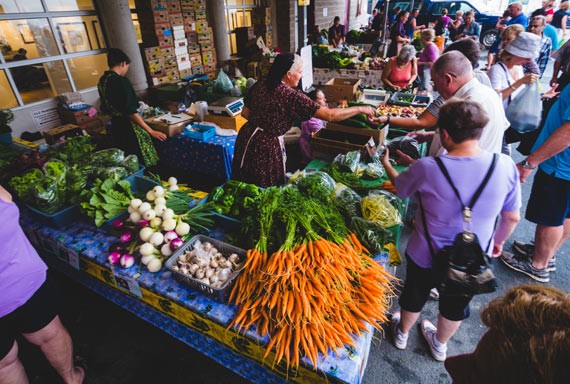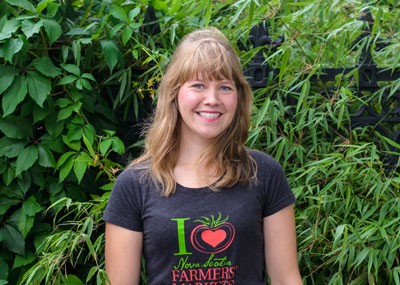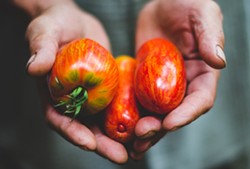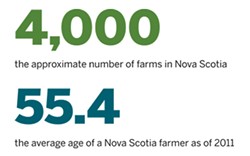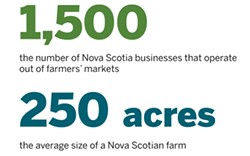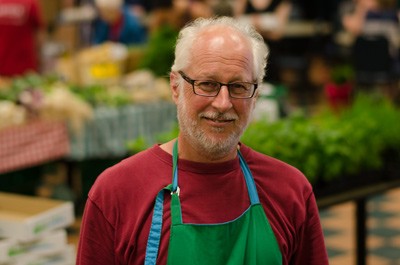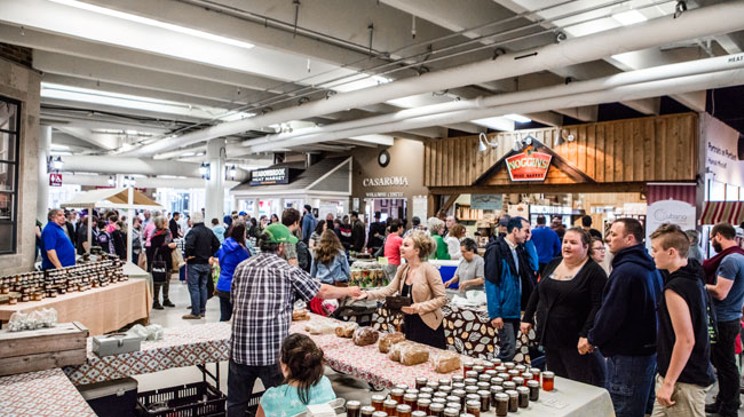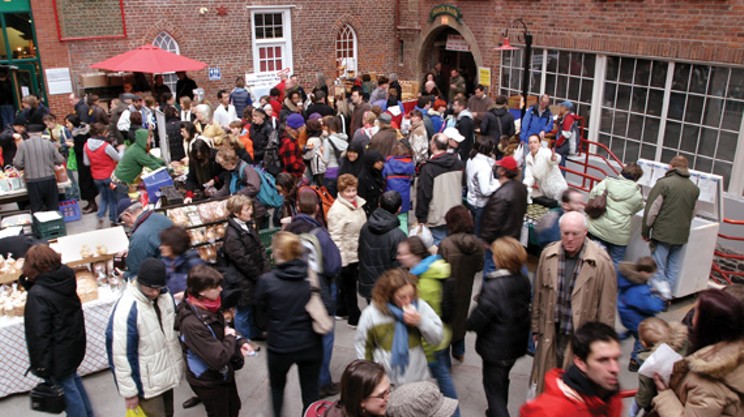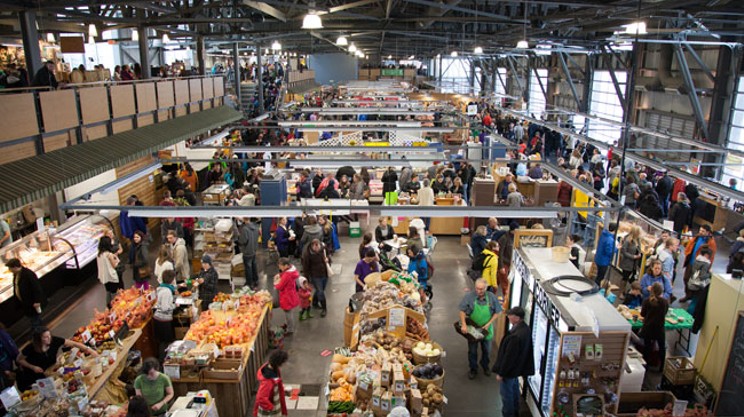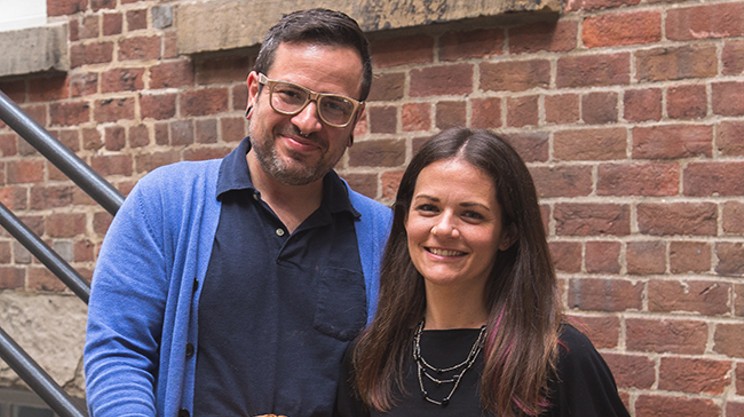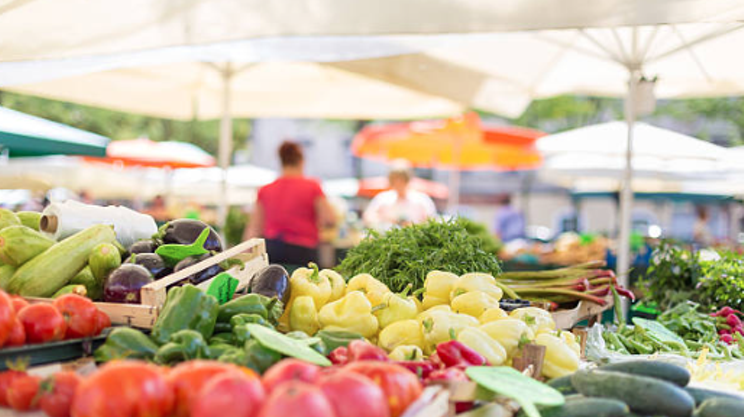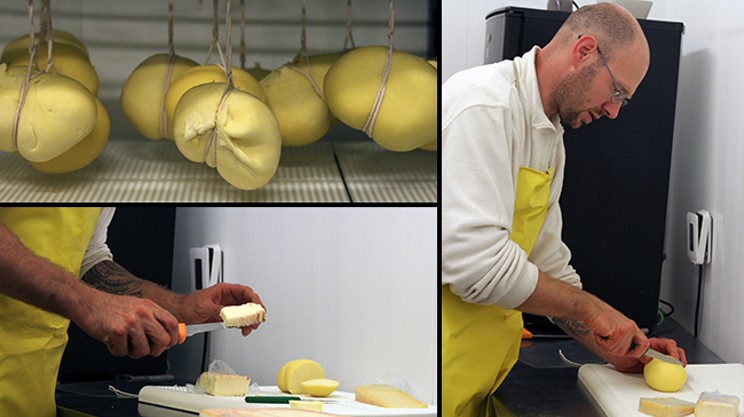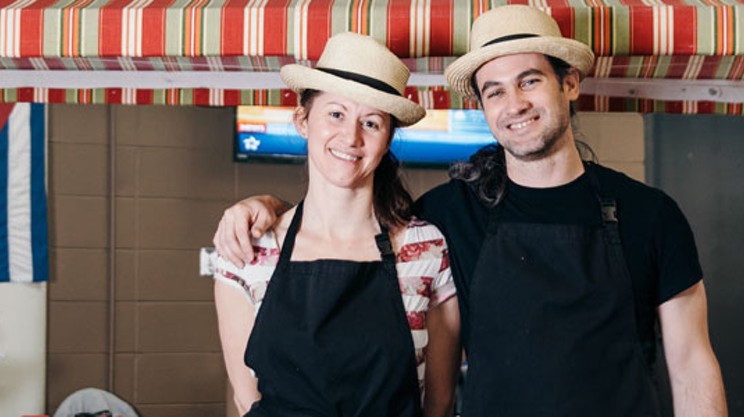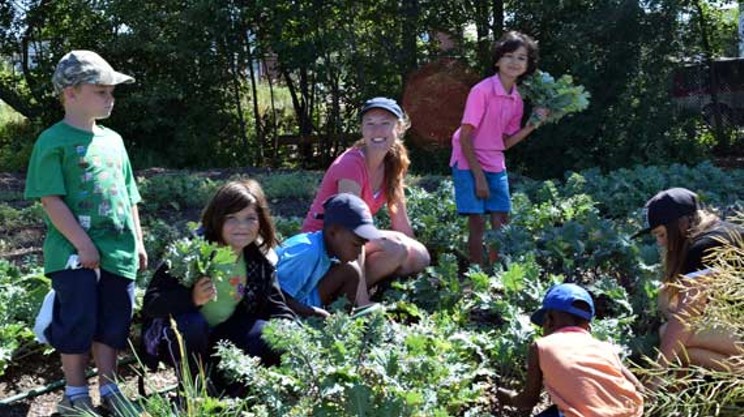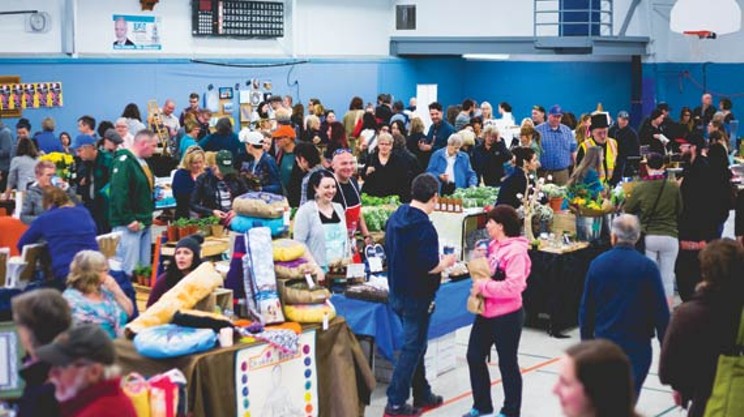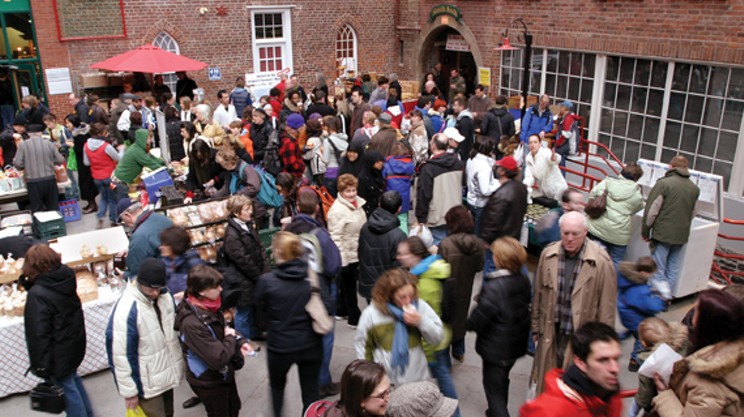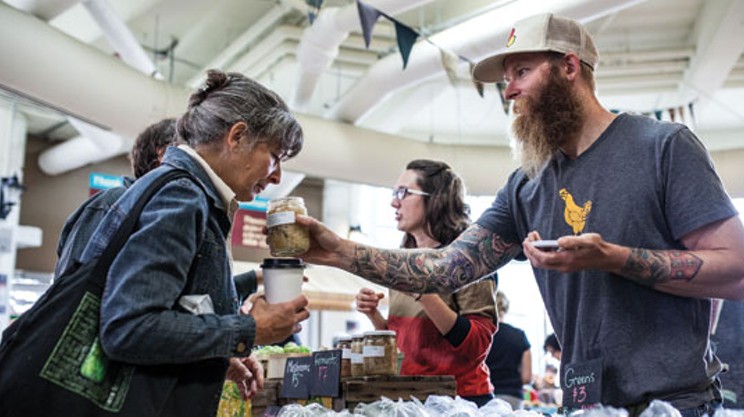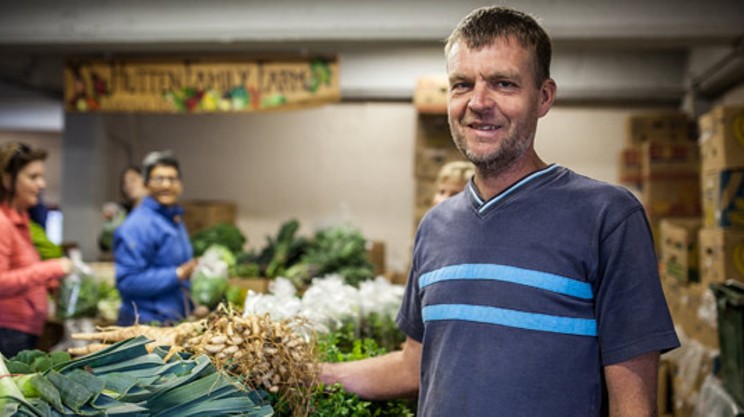Farmers' markets have been a part of the patchwork of Halifax's business and social communities since 1750. To put that in historical perspective, Halifax was founded in 1749.
The first market was on Bedford Row, between Upper Water and George Streets. In the 1850s, after the city of Halifax had incorporated, a City Market Building was erected across from the first City Hall, and so the city gained a Market Square.
On Wednesday and Saturday mornings vendors would sell their goods along the sidewalks, wooden tables and wide wicker baskets piled with fresh vegetables, herbs and plants. Fishermen would unload salted cod at the wharves where tall ships and visiting yachts now bob listlessly. Over the years, vendors like the Fader Brothers and J.A. Leaman & Company would sell chicken, pork and various canned goods, working their booths in blood-stained butchers' aprons, heaving sharp cleavers and stringing up chicken like Christmas lights, stacking tables with sides of pork and curls of sausage.
In 1916, architect S.P. Dumaresq, who also co-designed the Dingle Tower, designed a building specifically for the market, located at Brunswick and Albermarle—what was then 148 Market Street—but by the 1970s that building was nothing but a memory sitting in the shadows of Scotia Square.
By that point, Halifax's city charter had changed and no longer called for a city farm market. Supermarkets were now the name of the shopping game.
A committee was struck to rebuild Halifax's farmers' market community in 1979. In 1982, the Halifax City Farmers' Market Vendors Association formed, and by December of 1983 the Brewery Market was on its way to becoming a year-round market. In 1993 the Association's board opted to turn the market into a vendor owned-and-operated co-operative.
By 2007, serious planning for a new market space led to an agreement with the Halifax Port Authority that played into the HRM Economic Strategy and 2006's Cultural Plan to invest in community infrastructure. This, of course, became the Halifax Seaport Farmers' Market, opened August 2010—this month is its fifth anniversary.
The market cost $14 million to build and had a lofty plan of operating six days a week. While excitement for the market was palpable, a daytime supermarket model did not work for vendors or shoppers and those plans quickly failed.
In 2012, $12 million in debt, the City Market of Halifax Cooperative handed the business to the Port Authority to ensure continued, uninterrupted operation of the market.
"It's a really amazing achievement to think that Nova Scotia has a farmers' market that has over 250 vendors," says Keltie Butler, executive director of Farmers' Markets of Nova Scotia, a support and advocacy organization that works with markets in the province. "But across the province there are about 1,500 different businesses operating in the farmers' market sector, which is all pretty amazing. We have the highest number of farmers' markets per capita in Canada. And I think that does speak to the interest in local food here."
We now have four Saturday community farmers' markets in Halifax: the Seaport Market and the Historic Market (the co-op market that was once the Brewery Market) both in the south end of peninsular Halifax, the Norman Newman Market—more commonly called the Alderney Landing Market—which started in 1999 in the purpose-built ground floor of Alderney Landing in downtown Dartmouth, and the brand-new Forum Market, launched four months ago in Halifax's north end.
There are also other small markets, including the Friday morning VG Partners for Care market, and stands in places like The Carrot on Gottingen Street and Local Source on Agricola.
"I think people do love markets, which is why you see more and more," says John Sipos, a Maitland-based farmer who owns Shubie River Vineyards, and operates the new Forum Market. But there are hurdles when building the framework of a good market. "Farmers always live outside the city," he says. "So it's difficult to find venues that you can sell at."
This is why Sipos feels the expansion of the market infrastructure in Halifax has been beneficial to producers.
"Farmers have very limited time that they can stay away from their farms," he says. "So being able to come in and do two markets in one day is a real plus."
For Ted Hutten, who sells his Hutten Family Farm produce at the Historic Farmers' Market, that it's only one day is what's important.
"To make it worth my while to come into the city to sell, it just has to be accessible to me, accessible to my customer and a sensible time frame," Hutten says. "If I can sell my product in two hours and spend two hours talking to people that's better than six hours. And six hours is a lot better than 10 hours." He has no interest in retail as a business. "I'm interested in growing food, selling it as quick as I possibly can, and going home and doing it again."
Noggins Farm, on the other hand, has an extensive retail side. Noggins has a market at their 200-acre fruit farm in Wolfville, and also operate seven-day-a-week operations at both the Seaport and Alderney markets.
"Given the dynamics for population, the Halifax and Dartmouth region have by far the biggest market," says Andrew Bishop, who owns and operates Noggins Farm with his family. "We need to bring our products closer to the consumers rather than putting our business plan on a farmers' market that is destination driven, where they'd have to travel out of HRM to us to get our products. We're trying to diversify that so they have a choice."
"I just want to get to the people," says Anna DeNicola, owner/operator of HighLand Farm and CSA, and president of the board of directors of the Historic Farmers' Market Co-operative. "I don't want to sell wholesale and I don't really want to sell to restaurants. It's just not what I want to do."
There are several models at work when it comes to the markets as businesses: the Seaport Market is a for-profit business partnership run by the Port Authority, and the Forum is a sole-proprietorship for-profit business run by Sipos. (For-profit in these cases may just mean the goal is to be a self-sustaining entity.) The Alderney Market is run by the Alderney Landing Association, a non-profit society. In the case of Alderney and Seaport, a manager is in place to run the day-to-day operations and facilitate changes. The Historic Market is a non-profit, vendor-run co-operative. The society and co-op models are more democratic models than the partnership and sole-proprietor, with the co-op being owned and controlled by the vendors themselves, while members of a society may not be directly tied to the vendors at the market.
"I would say the predominant model in Nova Scotia is a co-op. And I think that's probably because we have a long history of co-ops and the co-op movement in Nova Scotia," says Butler. "But certainly overall in, say, the North America farmers' market sector, a co-op is not necessarily the norm. In the US, for example, an organization will often run multiple farmers' markets. On one side, you'd say they certainly get to build an expertise, which is definitely true," she continues. "On the other side, maybe there isn't the same amount of diversity that you have here where each market is really completely independent from the other."
Over the past few years, discussion of market culture in Halifax has focused on the Seaport and Historic markets as the tension between those two have made for good gossip and bad news: rumours of the Port Authority bitterly sitting on the registration of The Brewery Market name, causing the co-op to re-name itself the Historic Market; whispers of lacked commitment to locally grown food and small-scale producers; complaints of market restructuring that disadvantages minorities; and announcements of construction projects that could potentially threaten the longevity of a market.
Looking back to the market of the 1800s, you'll see some of the same issues you see today. There was, for example, a period when the city butchers had claim on the best stalls in the market, so country vendors would refuse to come in to sell. Where vendors sell, their ability to connect with the market, and even the policies that govern how they can sell can all have great affect on how the markets operate.
"I do sometimes see some dynamic between artisan vendors and farmer vendors, where there can be a slight sense of a hierarchy. I don't think that serves anyone," says Butler. "But it's interesting because in other regions outside of Nova Scotia, in the US, there are many markets that are only food. I think it's amazing what we're doing here. We have such a culture of artisans and craftsmanship."
A business that sees everybody as a commodity and prioritizes paper over people can't necessarily see the trees for the forest: they are so involved with the idea of the market as a whole, that they may fail to understand how the individuals create a system that is inclusive, interesting, and a true reflection of the community it serves.
Take, for example, the Seaport Market moving vendors, both last year and earlier this year. In April of 2014, the Seaport Market redesigned its floor plan and moved around 75 percent of vendors. This reportedly frustrated and alienated sellers from management. More vendors were moved in April 2015, this time prepared food vendors. The optics of this move were poor: racism seemed inherent when the vendors who were asked to move included Mary's African Cuisine, Amin's Indian Food, Delicious India (Viji's Veggies), Stella's Antiguan Cuisine, Pierogis 4 U, with others, like Julien's Pastry Shop and the Cake Lady, left to remain in their original spots.
"Fundamentally you're making decisions that you believe will grow the market for everyone. And for us, we want a vibrant, thriving farmers' market and that's really what has been our guiding light through all of this," says Julie Chiasson, executive director of the Seaport Market. "Anything that we do is always with the vendors' success in mind, that they would do well. That it would be something that would increase the business."
"Moving vendors doesn't happen lightly," says Butler. "But there's lots of reasons why that shifts. Maybe it's in the best interest of the whole market. That's one of the big issues. That's messy. You have the situation where you have vendors who are on the board of directors, working to create a viable farmers' market but also trying to find the separation of when they are representing their own business interests and when they are representing the good of the whole market. So that's challenging to navigate."
"I won't say if it was a right or a wrong, but here's the thing that comes out of anything like that: it created a dialogue within the market and as a result good things have come out of it," says Chiasson. The Seaport Market formed a six-member advisory council after that last move, to share perspectives and provide ongoing input from vendors. "It's helped us to grow stronger and it's helped us to come together."
Lisa Josey, market manager at Alderney, doesn't generally consider moving vendors, except when some vendors leave at the end of their growing season. She also foregoes application processes, preferring to simply talk to potential vendors and see how they fit. "A lot of people feel that if they fill out an application that somebody else is going to judge what they do and they feel intimidated," she says.
"It's very simple here," Josey says. "There's no process, you're not juried you don't have to fill out an application, you just have to talk to me. We're only people: you can talk to me and I can talk to you. I only have two rules really: don't be late and don't leave early. It's very simple here and it works."
It's important for the market itself to work. Not just because of access to food, but because markets are an important gateway for the development of small business.
"I've been going to farmers' markets for 28 years and I've seen a lot of people start solid businesses from renting a table one day at a farmers' market," says Sipos. "Steve-o-Reno's is a good example. When I started at the market 28 years ago, he was making smoothies in a small cubbyhole that was about four feet square. That's how he started: he just bought a blender."
Businesses like Two if By Sea Cafe, enVie and Cafe Karachi all got their start and widened their reach using markets. There's a long history of farmers' markets supporting small businesses started by immigrants, minorities and women. The market connects people to a community and a support network, allowing entrepreneurs that may not have the resources to have their own brick-and-mortar place to have access to economic opportunity. (See sidebar, here.)
Saronn Pov started her business, Saronn's Kitchen, at the farmers' market. Now she's preparing to open her own restaurant, Studio East, on Cunard Street. "It's interesting to see the different ways the markets are run, and how it impacts the relationships between the landlords, or owners, and the vendors. And how customers feel," she says. She still plans on using the market as a part of her business plan. "I want this awesome food culture to continue, and be strengthened...I want people to have access to ethnic goods that aren't imported."
With all of the food-based businesses that want to offer prepared foods made with local ingredients, you need to have a solid farm system. And that's what the markets are primarily built to support.
"They are the market," says Josey. "It doesn't matter how big your farm is or what you're growing: if you have your hands in the dirt, you're the number-one top priority here."
Farmers' markets are perhaps the most important direct marketing tool for farmers, allowing growers to sell directly to customers. Community Shared Agriculture programs are a sales model that has been gaining popularity. A CSA connects farmers to people who will buy annual shares or subscriptions that can be a nice way for a farm to ensure revenue, and lets customers form a real relationship to the farm that connects to the risk and reward inherent in farming. But farmers' markets really remain key.
"It's the only option small-scale producers have, end of discussion," says Hutten. "I think basically there's three models for small-scale vegetable and produce: you have restaurant delivery which is challenging, you have CSA which has challenges of its own and you have farmers' markets. Small-scale producers can't get into the food stores: the price point is too low, and they need big commitments. So I think that basically farmers' markets have been, for decades, the only real viable option for small-scale producers. And small-scale is relative," he continues. "I might grow 40 or 50 acres and someone else might grow 1,000 acres and someone else might grow three acres."
There are around 4,000 farms in Nova Scotia that produce and sell agricultural products; the average farm size is around 250 acres, which is about a third of the size of the national average. The vast majority of farms and farmland are in Cumberland, Colchester, Kings and Hants counties. Less than 200 farms are in Halifax county—in Statistics Canada's 2011 Farm and Farm Operator Data survey, the number was 164. So it's not a guess to say that most farmers have to drive for around an hour to sell at a Halifax farmers' market.
Around 70 percent of farms in Nova Scotia would be considered small-scale, with more than 40 percent making gross farm receipts of less than $10,000. In what's probably a surprise to many, our largest agricultural export isn't always produce. In recent years, mink fur has occasionally surpassed blueberries. Exports are where the money is—fur, dairy, poultry. The farms that bring a few crates of vegetables to market aren't doing it to become millionaires.
It's revenue, not acreage, that determines how the province looks at the size of a farm. "When the department says 'roughly 60 to 70 percent of Nova Scotia's farms could be considered small-scale farms,' it relates to the percentage of farms in Nova Scotia with a revenue of less than $25,000 and $50,000, respectively, that many would consider to be small-scale farms," says Cale Loney, media relations advisor for the Department of Agriculture. "Outside of that, it's the industry and products produced by the farm that would determine the scale. A small-scale dairy farm, for instance, may not have much similarity to a small-scale apple farm."
And so it's revenue that determines access to the various programs offered to support farms in Nova Scotia, and how the province determines what kind of supports are necessary for a farmer. "As a department, our programs often have criteria based on revenue opposed to a purely acreage-based evaluation," says Loney. "Small-scale farming is an important part of Nova Scotia's agricultural landscape and we are working to provide small-scale farmers with the support they need to be successful through programs like ThinkFARM, FarmNEXT and workshops through partners such as Perennia and their small-scale farm specialist."
A provincial crown corporation, Perennia "offers extension services on behalf of the department, with a dedicated organic and small-scale farming specialist. In addition, many of their specialists provide workshops and farm-visits that are for all farms regardless of scale," says Loney. "For example, just last week, an intro to small-scale irrigation workshop was offered by the department with Perennia at Abundant Acres in west Hants County."
FarmNEXT reduces the loan principle for farmers, helping to strengthen their earnings in the first year of operation. "It is a provincially funded program specifically designed to encourage and support new farmers to establish commercial farms in Nova Scotia," says Loney. And ThinkFARM is more of a brain trust for new farmers. It organizes an annual Small Farm Expo where workshops and demonstrations can help build skills, and, according to Loney aims to improve the skills of both new and transitioning farmers.
Beginnings are all well and good, but once you have a farm up and running, it becomes a question of sustenance. And some farmers feel that there isn't an ongoing framework for support just isn't there.
"We're so small that we fall under the radar," says DeNicola. "In order for us to get any of the very few grants that are out there, it really is who you know and how well you can work the system. If you're actually busy working your farm, you don't have time to pursue those things and learn how that whole world of paperwork and politics works. You have to, slowly you do end up needing to understand it, but I don't really think there is enough support in the province at all.
"You can go to Sobeys and 'buy local', but it's all coming from giant farms with subsidies from the government with labour models that are all migrant workers," she adds. "Any help that might be available is still not as accessible as it has to be for really small-scale producers."
The Noggins operation is larger than many of the other small-scale farms that sell at the markets in Halifax. It sells at the market and to local retailers, has its own market storefronts and also exports. "I'm not very boastful," says Bishop. "I just say I'm a small farm, but I guess with supporting family. We are medium-sized. It's a little bigger than a small farm.
"What we have is family operation, and presently there are 10 family members in three generations doing various things on the farm. My daughter and her husband have Taproot Farms, which is a certified organic farm. We all work together. We do have separate identity, but we also all market together. They focus on the organics and the vegetable side, which you see at the market. There are a few products that we get from our neighbours when we run short and/or certain things that we don't try to grow, like onions and carrots."
Noggins has a model that currently supports the farmers' market in a way that is unique amongst the other vendors, but one that you could also say is potentially outgrowing the traditional market structure. After all, is there a point to a farmers' market if you can buy produce from the same farm at Sobeys? There is nothing wrong with a varied business model, especially one that is successful for a medium-sized farm—that should be celebrated—but the Saturday morning farmers' market is integral to the survival of small farms.
"The biggest threat to the success of farmers' markets in Canada is the influx of much larger farms into the farmers' market model," says Hutten. "You have people who might be supplying Walmart with apples, but also have a farmers' market stand. You have people who might be supplying huge amounts of wholesale in product to food stores or whatever, and then have a farmers' market stand. It's not just true in vegetables, it's true in other aspects of the industry now."
"For me, as a small farmer, the most important is knowing that I'm supported within my market as a small producer, growing 100 percent or at least for me 90 percent of what I sell I grow myself," says DeNicola. "Knowing that I'm supported by my market and they're not allowing huge producers to come in and sell out of province produce or even produce that's produced on a whole different model."
As much as the farmers are reliant on Halifax's markets, the farmers' markets in Halifax are incredibly reliant on a vibrant rural economy, and rural infrastructure that supports farmers and rural development. It's not just about workshops on tractors, it's about maintaining and developing rural communities and keeping people not only interested in farming, but making sure people are able to subsist in the country.
"They just closed our school in Maitland," Sipos says. In June, elementary schools in Wentworth and River John also closed, a move that is devastating for rural communities. "There are no young people in Maitland anymore; nobody will move there without a school. It became a self-fulfilling prophecy: the school closed because the population dwindled, but the population dwindled because they were threatening to close the school for 20 years."
Sipos has actually downsized his farm to focus solely on retail. "I can't find employees," he says. "I'm eventually just going to have to shut the farm down. I'm not going to be able to sell it, I'm going to have to shut it down."
He sees no real efforts on the part of the government to keep people in rural communities. "You drive through Maitland and there are all of these big sea captain's houses and they're all dark because they're now summer homes or there's one old person living in the house and all you see is the blue light of the TV. It's really desperate." Sipos says it doesn't resonate with people in urban areas because it's not an urban issue. "But I guess that's how it relates back to farmers' markets," he says. "Eventually there won't be farmers' markets because there won't be farmers."
"It's a super-challenging business," says Hutten, who notes labour as another challenge to developing rural farms. "It's a very competitive, very different marketplace than it was a decade ago, than it was 15 years ago."
Hutten says the changes in his farm have been substantial in the past decade. "I'm probably growing twice what I was seven or eight years ago and probably realizing slightly less net revenue than I was then. The competition is tougher, wages to local people are climbing higher, and unless you want to go down the migrant labour route—which is not me—by the time you do your payroll, tax, you're looking at $18 an hour. You can figure it out: on a three- to four-dollar bag of beans there's probably two dollars' labour in those beans. By the time you pay for the farm, pay for the equipment, grow the beans, retail the beans and put them in a plastic bag you're probably spinning your wheels.
"So many young people who I see wanting to be in this industry want it incredibly bad, but this industry is difficult," Hutten says. "This industry takes an incredible amount of discipline, and you know, I'm 50 in April and I'm literally working 100-plus hours a week. I'm really getting kind of sick of it, to be honest. I still love what I do. I love the excitement of coming up with new crops that nobody else grows, there's a lot of stuff I love about it, but I don't like the industry, I don't like the labour model that's being utilized. I don't like the scale that even I am being forced to operate under just so I can make a living."
The average age of a farmer is 55.4 years old. "That almost makes me a young farmer," says Sipos, laughing. "A lot of the vendors I've known for 28 years back from when we started." He names Norbert Kungl of Norbert's Good Food and Selwood Green, Greg Gerrits of Elmridge Farm, his former business partner, Riverview Herbs, and a few others. "We all started at the same time. If you look around the market at the farmers, they're all 60." He worries there aren't a lot of young farmers who are coming up behind them, ensuring the future of farms and farmers' markets for the next generation.
"I guess I'm a bit of an exception, I've always felt positive about what I do," says Bishop. "I'm getting close to retirement age and I have the next generation solidly in favour of carrying the business on. I would say that yes there are challenges and the margins in a lot of cases aren't there, but there is a satisfaction of working your own business and the way of life that there is there. And we have to put a little bit of value in that or we wouldn't be doing it, for sure."
Chiasson sees a bright future for the markets with the generational farms, but also with young farmers, like Thatch Patch Family Farm, started by a couple in Bridgewater. "We have our existing farms and we have new farmers that are coming in from all over the place," Chiasson says. "It's exciting to see what will happen over the next number of years, but it's encouraging to see that there's interest. The more interest and the more demand for vegetables, the more you will see people decide, 'Maybe I want to get into farming.'"
Jamie Tingley and Sarah Fisher are farming on less than an acre of land in Cow Bay, defying the odds as young, relatively urban farmers. They don't have any illusions about the job. "Some see it as a hip, glamourous lifestyle," says Tingley. "The Ted Huttens didn't get into it thinking it was that."
Hutten, in fact, ran a two-acre vegetable farm on the side while holding down a 55-hour-a-week job milking cows in order to build his farm. "I saved my money from my job and bought a tractor. It's not really rocket science," he says.
"It's incredibly difficult work. And not a lot of people want to actually do the work," says Tingley. "They can do it for a couple of years, and we're only three in, but a lot of farmers say that by the seventh year you've hit your stride. If you make it that long you're going to stay with it. It's hard work, but it's the most honest work I've ever done. And that's really what I like about it. It's honest. It's real work. There's no bullshit, that's for sure. But it's tough. I don't know what the future of it is."
The future is in the urban support of our rural infrastructure: it's in people embracing local products and spending at least part of their money buying from farmers who are spending an hour driving into Halifax to sell things raised on our land. The future is in farmers' markets. The future is complicated.
"How do we ensure that the people showing up, putting in their time, creating product, are making a living?" asks Butler. "How do we make sure that farmers have a viable amount of dollars in their pocket without sacrificing the idea that community builds around a market?"
John Sipos doesn't have the answers, but he's sure of one thing: "Support your local farmers' market, or it won't be there in 10 years."
-with files from Allison Saunders
